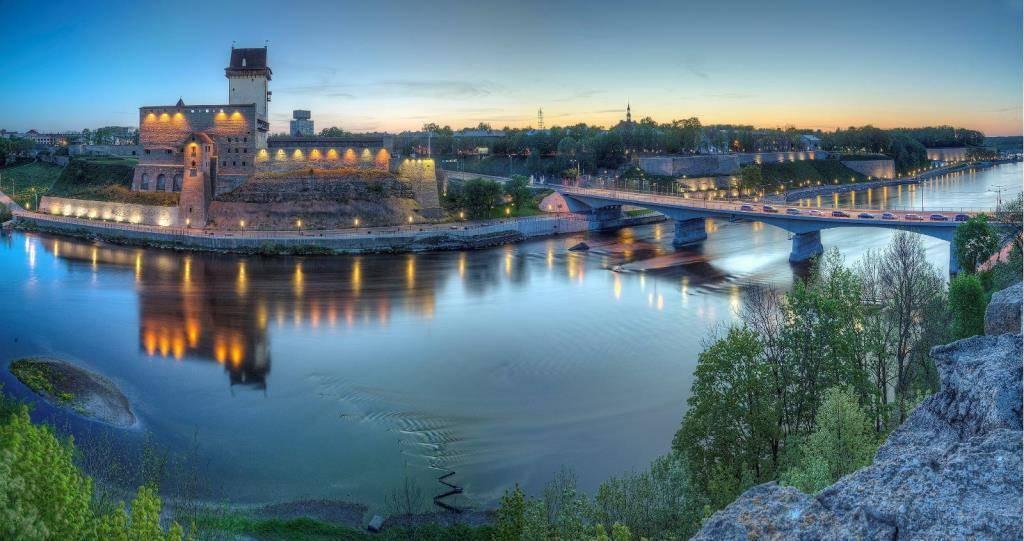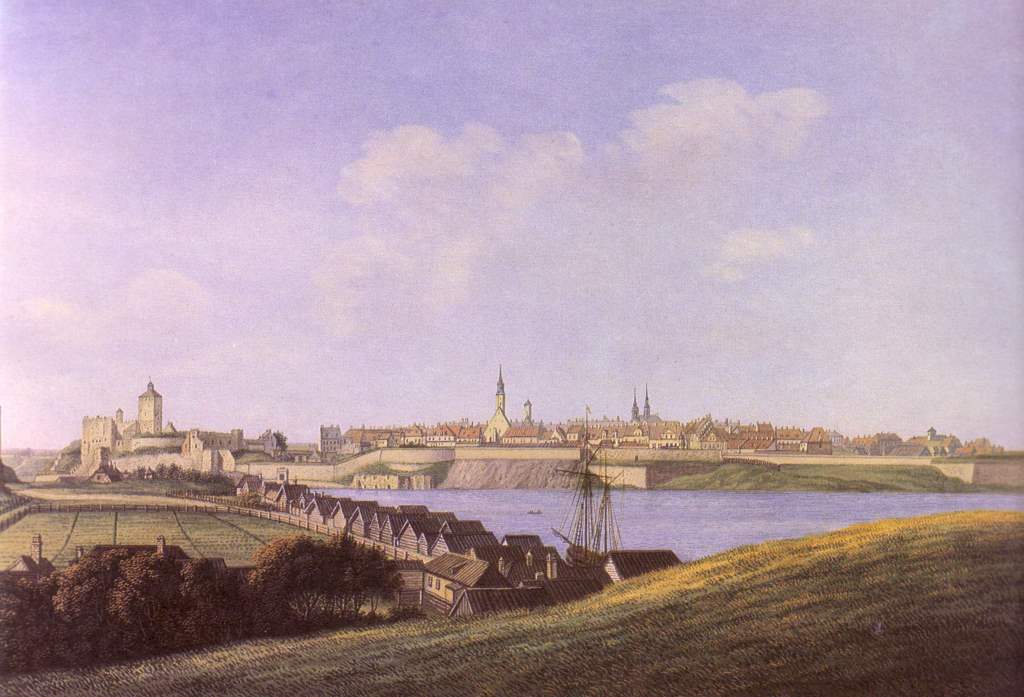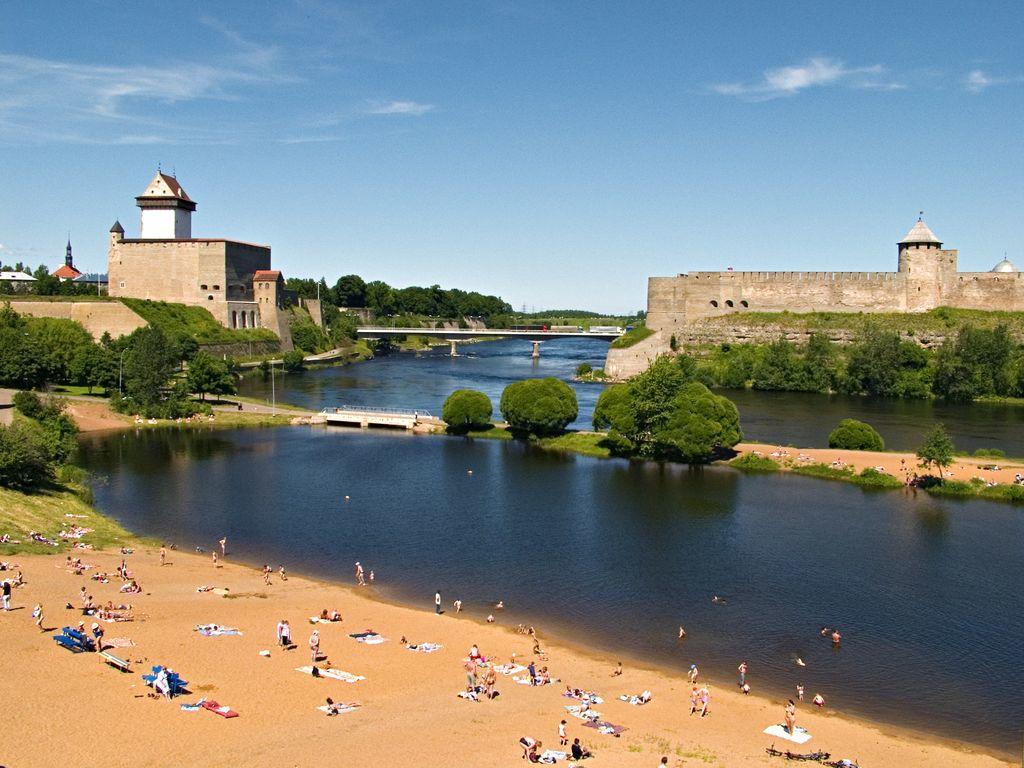Estonians are surprised to find someone from Pärnu who lives in Narva, so you can imagine the mixture of surprise and suspicion with which someone all the way from the US who lives in Narva is greeted.
One year ago I earned my master’s degree in Russian history at Indiana University and was not sure what to do next. With my main skills being able to write a good academic paper and five years of Russian language training, I decided that Tartu might offer me opportunity as a freelance editor and a Russian to English translator. I had been to Estonia several times before, since I have Finnish citizenship and wrote my bachelor’s thesis about Estonia’s relationship with the Maris, an eastern Finno-Ugric ethnic group in Russia, in collaboration with the Estonian politician and political scientist, Rein Taagepera.
After living in Tartu for six months, my lease came to an end and I was unable to find a good living situation so I expanded my search to Narva. After all, as a freelance worker, I can work from anywhere.
Usually one falls in love with a city and then moves there, but for me it happened in the opposite order. Narva attracted me mainly because of the opportunity to immerse myself in the Russian language. After all, Narva is the EU’s most Russian-speaking city. The Russian language courses I had enrolled in Tartu left much to be desired. Other than that, I expected a little more than a grey, possibly dangerous, Soviet city. But I was about to be surprised.
Strolling outside of my new apartment, I encountered the dilapidated façade of the Gloria Bastion. To live right beside this historical artefact and to be able to walk along it and inside it was an incredible thrill that captured my imagination as a historian. To find out that the humble mound of dirt between my apartment and the college was the ruins of the corner of the older neo-Italian-type bastion further fascinated me.
I found that the more I discovered about Narva’s past, the more I wanted to know. Learning about the town became a hobby for me, almost an obsession. Not only did my Russian improve, but also my Estonian – as Estonian Wikipedia became my go-to source for detailed descriptions of different buildings.
Two rival worlds
The sense of tragedy in Narva is palpable. The town was 98% destroyed by Soviet bombing raids near the end of the Second World War. What had once been a masterpiece of baroque architecture on the Baltic Sea was reduced to rubble. But the tragedy of Narva is much deeper than this.
With the German and Estonian forces deciding to make a stand in Narva, the entire population of the city was evacuated in 1944. After the war, the occupying Soviet government, with plans to turn Narva into a secret uranium enrichment plant, did not allow the former inhabitants of Narva to return home. The old town could have been restored from its ruins, but instead the rubble was removed and Soviet apartment blocks took its place.
The glory of Narva’s past is lost and any connection with that past is so longed for by its population that the recent discovery of cobblestones from the former train station was hailed as such an important discovery that the need to carefully preserve it temporarily halted the construction of the new train station.
Yet, while Narva has seen dramatic changes in its history, some things have remained constant over the centuries and this image captures that. These two castles across the river are not part of the same complex. The Hermann Castle on the left was begun under Danish rule in the 13th century and then passed on to the German Teutonic Knights. The Ivangorod Fortress on the right was built by the Muscovite tsar Ivan III in the late 15th century. So it was literally right here that two rival worlds, the Germanic Catholic West and the Russian Orthodox East, were staring each other down. There is nowhere else in Europe where two rival castles are in such close proximity to each other.
Both sides had a claim on the other’s land – Russia wanted to expand into the Baltic region, while the West, under Sweden, ended up holding the entire Gulf of Finland for a time. But mostly it was an uneasy truce. Two military rivals, two ideological worlds, staring each other down. Yet, on the ground, Narva was an important hub in the Novogorodian trade route. Therefore, one can imagine that there was quite a lot of interaction between the two sides.
Interaction between the Estonian and Russian cultures
It’s amazing to think how what was true in the 15th century in many ways holds true to this day. On one side, you have independent Estonia, and by extension, NATO, the EU, and the “West,” while on the other side, you have the Russian world. Two ideologies. Two worlds, staring each other down across the Narva River in an uneasy truce, both having some claim on the other, both ideologically and territorially.
Russia claims to be the protector of all Russian-speakers, and Narva is a Russian speaking city. Nowhere else is this tension between East and West more acute than Narva. Yet, while politicians in Brussels and Washington, DC, lose sleep, on the ground it is a much different story. Every day there is a steady flow of people walking and driving across that bridge in both directions and there is a great deal of interaction between the Estonian and Russian cultures.
Narva continues to fascinate me and there is still so much left to discover. After returning from a one-month trip down though the Baltic states, Poland and Ukraine to advertise my editing services to university students and professors, I returned to Narva. That’s when I realised, it felt good to be home.
I
Cover: Narva river promenade (Visit Estonia).





Was very interested to see this – I lived in Narva from 1994-1996 and 2000-2005 and (at least by the end!) also spoke Russian well.
There is so much more that could be said about Russians in Estonia and how, at least in Narva, they inhabit an entirely different mental world. I may well have missed some changes over the past 10+ years, but my impression is still that Russians and Estonians – however well they sometimes get on as individuals – mostly talk past each other when it comes to questions of history and identity. I was privileged to know two unique people who bridged the gap: one, an elderly Russian man who was born in pre-war Estonia and was evacuated to western Estonia as a child in 1945, the other a middle-aged Russian-born man who went to an Estonian-speaking school in Tartu in the 1960s. Across the country there must be more people like them. But their ability to inhabit these two worlds simultaneously is not shared by most of their compatriots, Russian or Estonian. The multiple historical tragedies that afflicted this part of the world are still cynically exploited by political figures on both sides of the ethnic divide. As a Canadian, I am intuitively sympathetic to small countries with overbearing neighbors. As a westerner, I put more stock in democracy and respect for human rights than in vaguely-defined and easily-manipulated “traditional values”. And as a human being, I weep for the crimes committed by the powerful, of which the former Soviet Communist Party is a particularly appalling example. But none of that justifies the petty harassment that Russians have suffered in modern Estonia, where they are all too often treated as if they are personally responsible for the Soviet occupation. (Since my Estonian is much more limited than my Russian, in other parts of the country I was often seen as a Russian and treated accordingly, so I have personal experience to vouch for this, on top of the many, many stories I heard.) Treated well, the Russians of Narva would have become a powerful weapon against the propaganda emanating from Moscow today. Unfortunately, for the most part they have instead become fodder for it. One day, perhaps, some far-sighted leader in Tallinn will recognize this. Those of us who love Estonia and – at the same time – all humanity can only hope.
Hello Kristoffer. Very well written. You, a journalist, I hope you continue to write about your experiences and findings of Narva. Again, superb writing. Congratulations.
Thank you.
Narva before 1944:
http://objektiiv.ee/tana-69-aasta-eest-havitati-eesti-uks-ilusamaid-linnasid-narva/
.